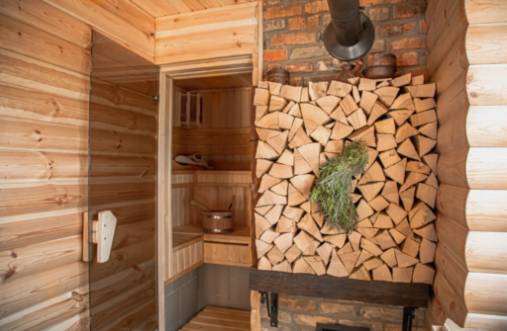Wood-burning saunas are a popular choice for individuals seeking a traditional and authentic sauna experience. However, inadequate heating can sometimes be a common issue with these types of saunas. In order to address this problem and ensure optimal heating performance, there are several key factors to consider. By focusing on improving airflow, upgrading insulation, and selecting the right type of wood, sauna enthusiasts can enjoy a consistently cozy and relaxing sauna experience.

Improving Airflow to Boost Heating Efficiency in Wood-Burning Saunas
Without adequate airflow, the heat generated by the wood stove may not be distributed evenly throughout the sauna, leading to insufficient heating.
To improve airflow in a wood-burning sauna, there are a few key steps that can be taken. Firstly, make sure that the ventilation system is functioning properly. This may involve cleaning out any debris or blockages in the vents or chimney to allow for better airflow.
Additionally, consider installing a vent or fan to help circulate the air within the sauna. This can help to distribute the heat more evenly and effectively throughout the space, leading to a more comfortable and efficient sauna experience.
Another option is to strategically place vents or openings in the sauna to allow for natural airflow. By creating a system of intake and exhaust vents, you can help to regulate the temperature and humidity levels in the sauna, ensuring a more consistent and enjoyable sauna session.
Overall, improving airflow in a wood-burning sauna is essential for boosting heating efficiency and creating a comfortable sauna environment. By taking the necessary steps to optimize airflow, you can ensure that your sauna reaches and maintains the desired temperature, allowing you to fully enjoy the relaxing and rejuvenating benefits of a traditional wood-burning sauna experience.
Upgrading Insulation for Better Heat Retention in Wood-Burning Saunas
Without adequate insulation, the heat generated by the wood stove can easily escape, leading to insufficient heating in the sauna. To address this issue, it is important to upgrade the insulation in your sauna to improve heat retention and overall heating efficiency.
One effective way to upgrade insulation in a wood-burning sauna is to add insulation materials to the walls, ceiling, and floor of the sauna. This can help to prevent heat loss and create a more comfortable and consistent temperature inside the sauna. Common insulation materials used in saunas include mineral wool, fiberglass, or foam boards, which are designed to withstand high temperatures and humidity levels.
Another important consideration when upgrading insulation in a wood-burning sauna is to ensure that all gaps and cracks are properly sealed. Air leaks can significantly impact heat retention in the sauna, so it is important to seal any areas where heat may escape. This can be done using heat-resistant caulking or insulation tape to create a tight seal and prevent heat loss.
In addition to upgrading insulation, it is also important to regularly maintain and replace any damaged or worn insulation materials in the sauna. Over time, insulation can degrade and lose its effectiveness, leading to heat loss and decreased heating efficiency. By staying on top of insulation maintenance and replacement, you can ensure that your wood-burning sauna remains well-insulated and efficiently heated for years to come.
Choosing the Right Wood for Optimal Heating Performance in Saunas
Choosing the right wood for optimal heating performance in saunas is essential to ensure a comfortable and efficient sauna experience. The type of wood you use can significantly impact the heat output and overall performance of your sauna. When selecting wood for your sauna, it is important to consider factors such as heat retention, combustion efficiency, and aroma.
One of the most popular choices for sauna heating is kiln-dried softwood, such as spruce or pine. Softwoods are known for their high resin content, which helps them burn hot and fast, making them ideal for quickly heating up the sauna. However, softwoods tend to produce more resin and can create sparks, so it is important to monitor the fire carefully.
Hardwoods, such as oak or birch, are another option for sauna heating. Hardwoods burn slower and produce less resin, resulting in a longer-lasting and more controlled heat source. While hardwoods may take longer to reach the desired temperature, they provide a steady and consistent heat that can be more suitable for longer sauna sessions.
Another consideration when choosing wood for your sauna is the aroma it produces when burned. Some woods, such as cedar or eucalyptus, have a pleasant and relaxing scent that can enhance the sauna experience. However, it is important to avoid woods with toxic oils or chemicals that can be released when burned.
Ultimately, the best wood for your sauna will depend on your personal preferences and the specific requirements of your sauna setup. It is recommended to experiment with different types of wood to find the one that best meets your heating needs and desired sauna experience.
